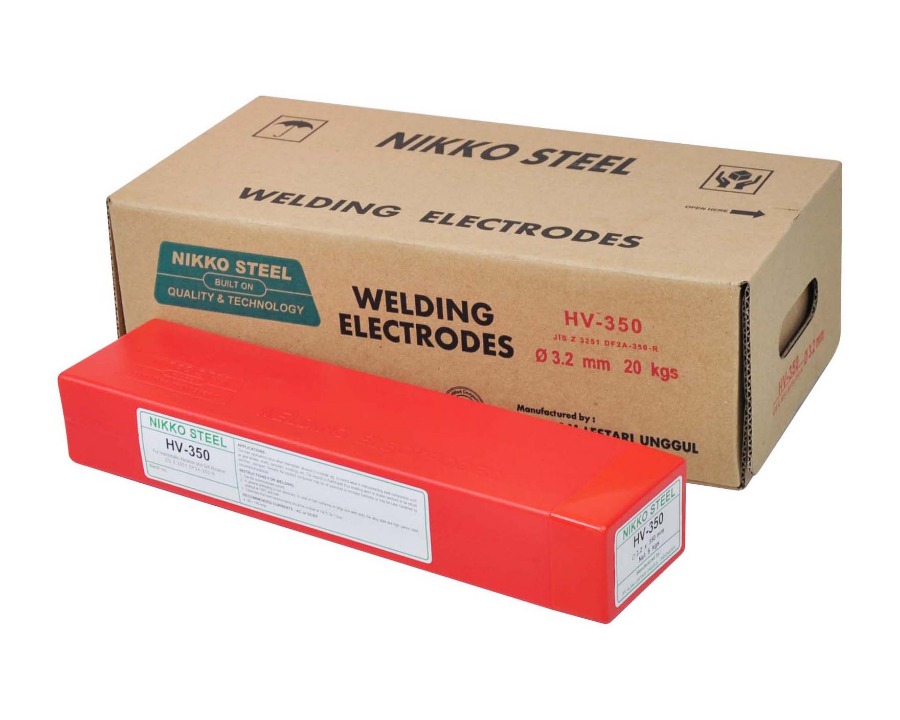RUTILE - LOW ALLOY - HIGH EFFICIENCY HARDFACING ELECTRODE WITH EXCELLENT RESISTANCE TO IMPACT LOADING COMBINED WITH MEDIUM ABRASION RESISTANCE
HV-350

CLASSIFICATION
DIN 855 E1-UM-350-GP | JIS Z 3251 DF2A-350R
PRODUCT DESCRIPTION
The design emphasis of the alloyed weld metal ensures the desired hardness level of the specification is readily achieved as is the deposits maximum resistance to impact loading combined with medium resistance to abrasion. The flux contains the appropriate alloying elements plus iron powder addition and is extruded onto a ferritic wire with a balance of silicates that ensures both coating strength and resistance to moisture absorption.
WELDING FEATURES OF THE ELECTRODE
The electrode is suitable for both AC and DC and is used to best advantage in the flat and HF positions. The arc is smooth and stable weld beads are evenly rippled, of bright appearance and the slag readily detachable. The weld deposit is highly crack resistant under normal circumstances, but on high carbon cast steels or restrained sections of mild steel, a pre-heat of 150 °C should be used.
APPLICATIONS AND MATERIALS TO BE WELDED
The main applications occur when intermetalic abrasion is involved, eg: to control wear in interconnecting steel components such as gear wheels, shafts, sprockets, couplings etc. The deposit is machinable thus enabling worn or broken sections to be rebuilt and then reshaped. Similarly the repaired component may be oil quenched to increase hardness or may be case hardened by conventional practices.
WELDING AMPERAGE AC and DC
OTHER DATA
Electrodes that have become damp should be re-dried at 150ºC for 1 hour.